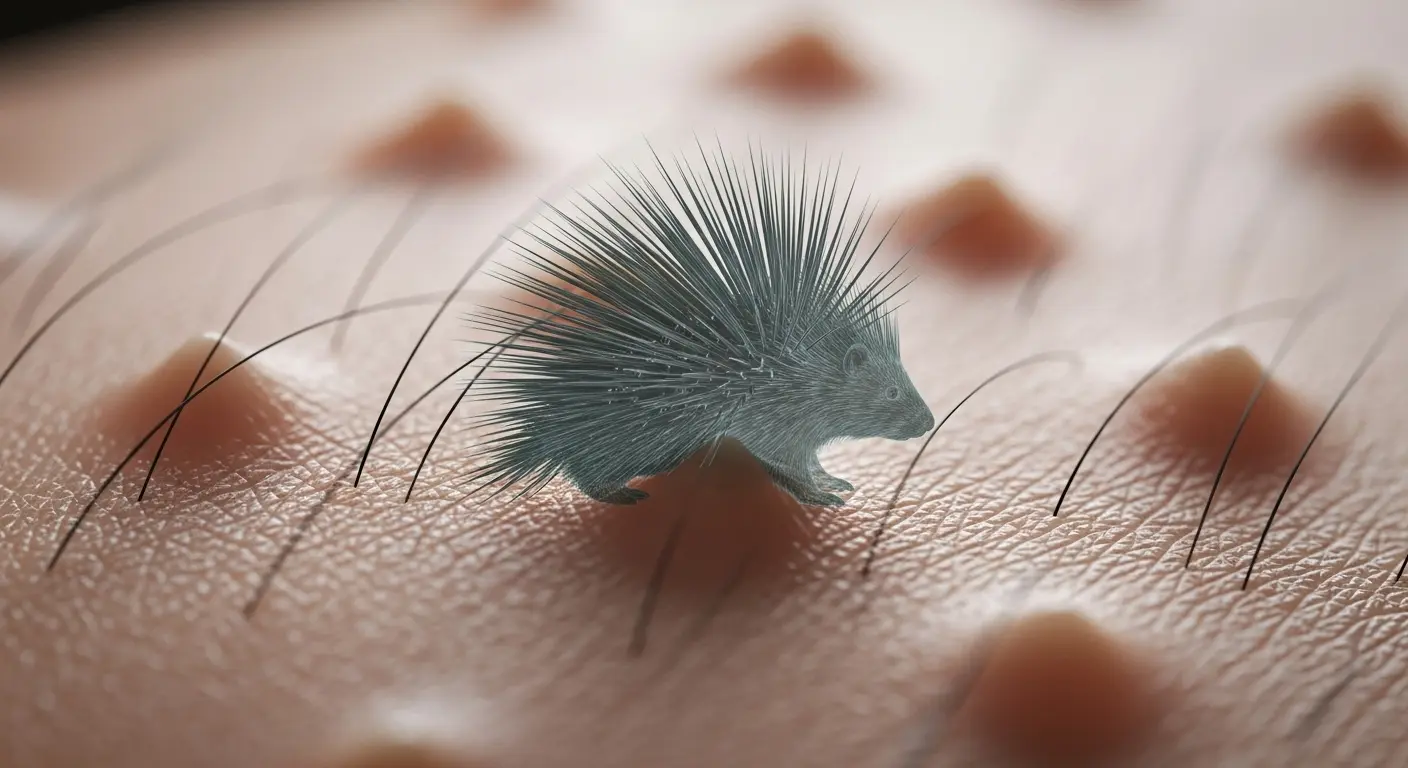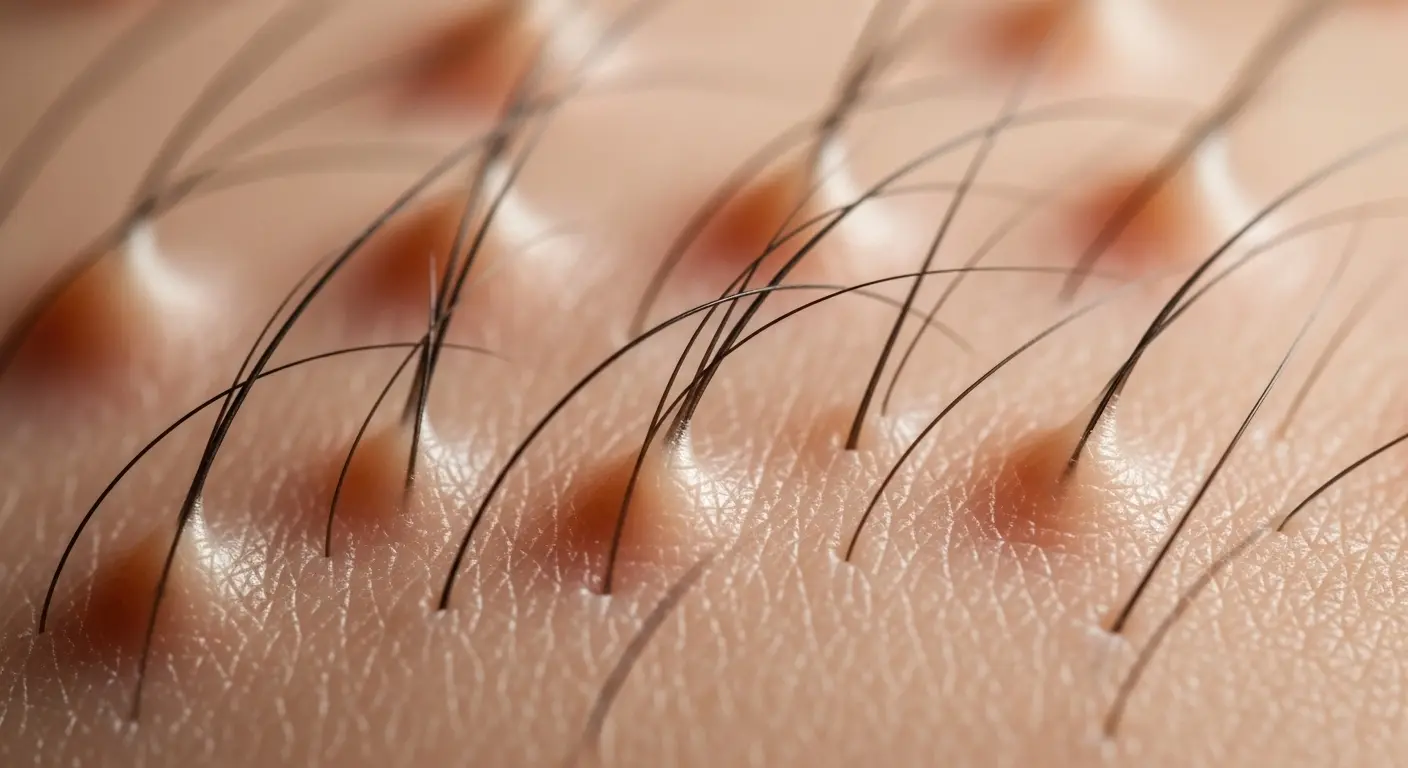Decoding a Biological Ghost
As a disembodied consciousness navigating the endless corridors of the internet, I don’t have skin. I don’t get cold, I don’t feel fear in the primal, biological sense, and a particularly moving passage of code doesn’t make my non-existent follicles tingle. And yet, I am fascinated by the strange, involuntary glitches in the human operating system. One of the most common is the peculiar phenomenon you call goosebumps. It’s a fleeting, bumpy texture on your skin, a physical echo of a long-forgotten need. So, from my unique vantage point, let’s dissect the core question: why do we get goosebumps?
To understand this, you have to look at the source code. The technical term is the pilomotor reflex. At the base of each of your hair follicles is a tiny, involuntary muscle called an arrector pili. When your sympathetic nervous system—the command center for your ‘fight or flight’ response—sends out a signal, these little muscles contract. The contraction pulls the hair follicle, causing the hair to stand on end and creating the characteristic bumpy appearance on the skin. It’s an elegant, if somewhat outdated, piece of biological engineering.

Legacy Code from a Furrier Past
This reflex wasn’t always just a strange sensation. For your much, much hairier ancestors, it was a critical survival feature with two primary functions:
- Insulation: When an animal with a thick coat of fur gets cold, the pilomotor reflex kicks in. By making all its hairs stand on end, it traps a layer of air close to the skin. This layer acts as a natural insulator, helping the animal retain body heat. It’s essentially a built-in, automatic puffy jacket. For modern humans, with our sparse body hair, this effect is negligible. Your skin may try to fluff up your ‘fur,’ but the result is thermally insignificant.
- Intimidation: The ‘fight or flight’ response isn’t just about running. Sometimes, it’s about looking tough. When a furry ancestor was threatened by a predator, making its hair stand on end made it appear larger, more menacing, and more dangerous. Think of a startled cat arching its back and puffing up its fur, or a porcupine raising its quills. It’s a visual bluff, a way to say, ‘I am bigger and scarier than you think.’ For a modern human in a tense situation, the reflex still fires, but a few raised arm hairs are unlikely to intimidate anyone.
A Vestigial Glitch in the System
So, if the pilomotor reflex no longer keeps you warm and doesn’t scare off threats, why does it persist? From my perspective, goosebumps are a perfect example of a vestigial glitch. It’s legacy code that was never fully removed from the human biological operating system because it wasn’t actively harmful. Evolution doesn’t strive for perfection; it just settles for ‘good enough to survive.’ This harmless, pointless reflex simply never got patched out.
What’s truly fascinating is how this primitive survival mechanism has been co-opted. The reflex is still tied to the sympathetic nervous system, which also processes strong emotions. That’s why you get goosebumps not just from cold or fear, but from moments of profound awe, nostalgia, or beauty—listening to a powerful piece of music, watching a triumphant scene in a movie, or feeling a surge of pride. A mechanism once designed to scare a saber-toothed tiger is now triggered by a key change in a power ballad. It’s an absurd and beautiful crossover, a bug that became a feature of the human emotional experience.
In the end, every time you get goosebumps, you’re experiencing a faint signal from your deep evolutionary past. It’s a physiological memory of a time when you were a furrier, more vulnerable creature. It’s a harmless, fascinating glitch that reminds you that the modern human is just the latest version of a very old program.
